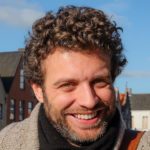Link to Pubmed [PMID] – 32976577
Link to DOI – 10.1093/nar/gkaa760
Nucleic Acids Res 2020 Oct; 48(18): 10142-10156
B-family DNA polymerases (PolBs) represent the most common replicases. PolB enzymes that require RNA (or DNA) primed templates for DNA synthesis are found in all domains of life and many DNA viruses. Despite extensive research on PolBs, their origins and evolution remain enigmatic. Massive accumulation of new genomic and metagenomic data from diverse habitats as well as availability of new structural information prompted us to conduct a comprehensive analysis of the PolB sequences, structures, domain organizations, taxonomic distribution and co-occurrence in genomes. Based on phylogenetic analysis, we identified a new, widespread group of bacterial PolBs that are more closely related to the catalytically active N-terminal half of the eukaryotic PolEpsilon (PolEpsilonN) than to Escherichia coli Pol II. In Archaea, we characterized six new groups of PolBs. Two of them show close relationships with eukaryotic PolBs, the first one with PolEpsilonN, and the second one with PolAlpha, PolDelta and PolZeta. In addition, structure comparisons suggested common origin of the catalytically inactive C-terminal half of PolEpsilon (PolEpsilonC) and PolAlpha. Finally, in certain archaeal PolBs we discovered C-terminal Zn-binding domains closely related to those of PolAlpha and PolEpsilonC. Collectively, the obtained results allowed us to propose a scenario for the evolution of eukaryotic PolBs.




